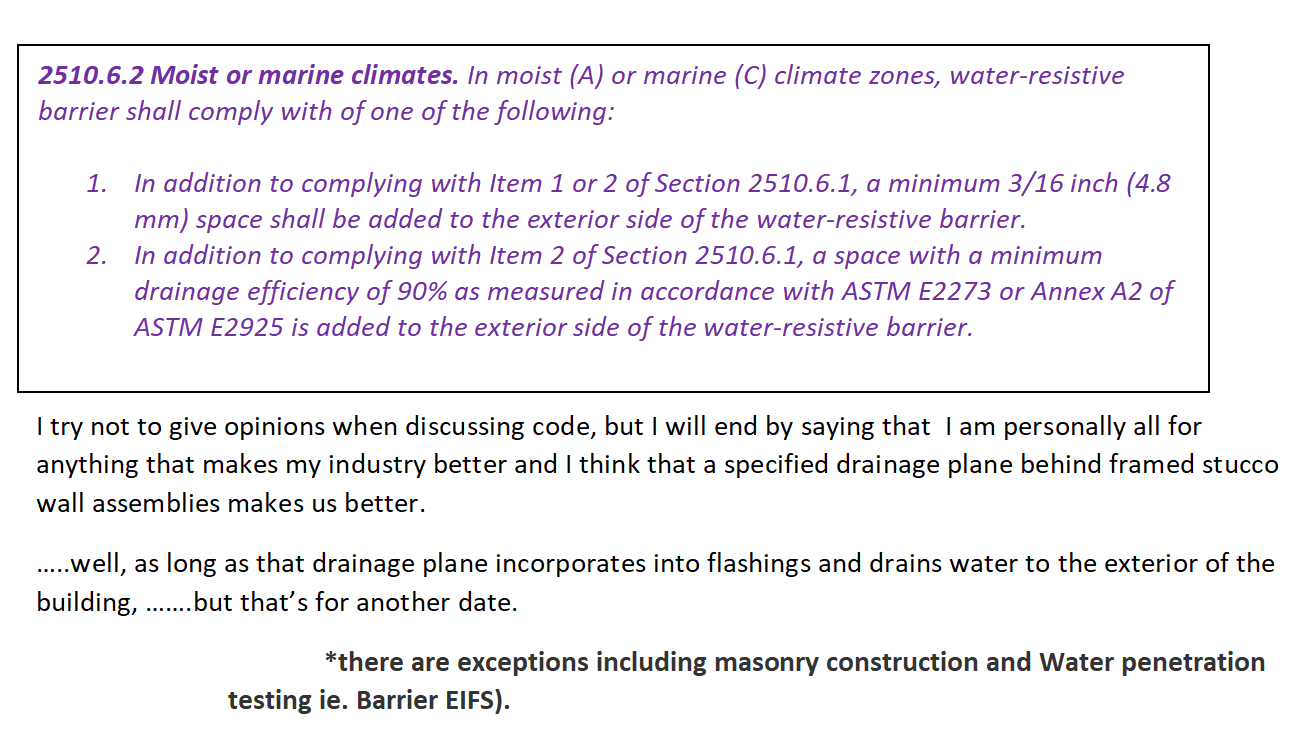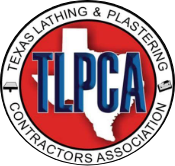Drainage on exterior walls is not a new building practice. The International Budling Code (IBC) Chapter 14 has addressed the need for drainage in wall assemblies, which would include stucco, as far back as its inception.*
The Lathing and Furring for Cement Plaster (Stucco) Chapter of the IBC expands upon Chapter 14 for installations over wood-based substrates and over the years, this section has evolved from a simple list of required materials to performance-based drainage requirements.
I’m going to try not to quote a lot of code here, but for clarity its difficult to show this without the actual words and for those of you that know me, I do love to quote code.
To clarify the modifications, I’ve color-coded the additions and modifications per publication.
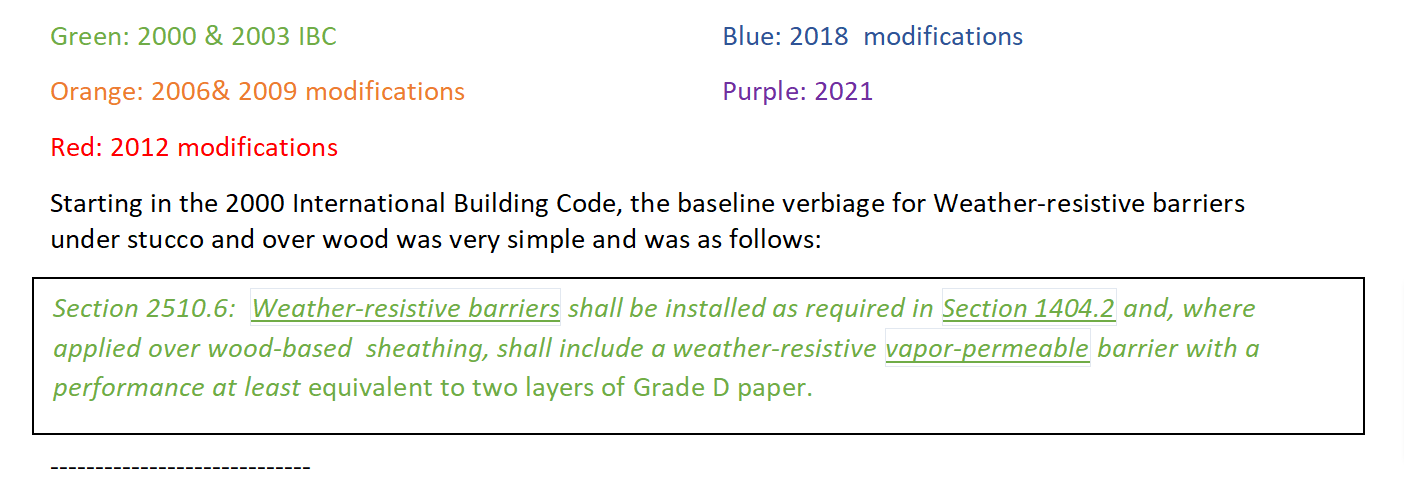
—————————–
In 2006, “Weather” changed to “Water” and Exception 1 was added.
Water-resistive barrier is a much better definition of how these products perform, versus Weather, which could have included air barrier, vapor barriers, etc.
When the exception was added, it was the consensus in the industry that they meant the use of foam plastic behind the stucco.

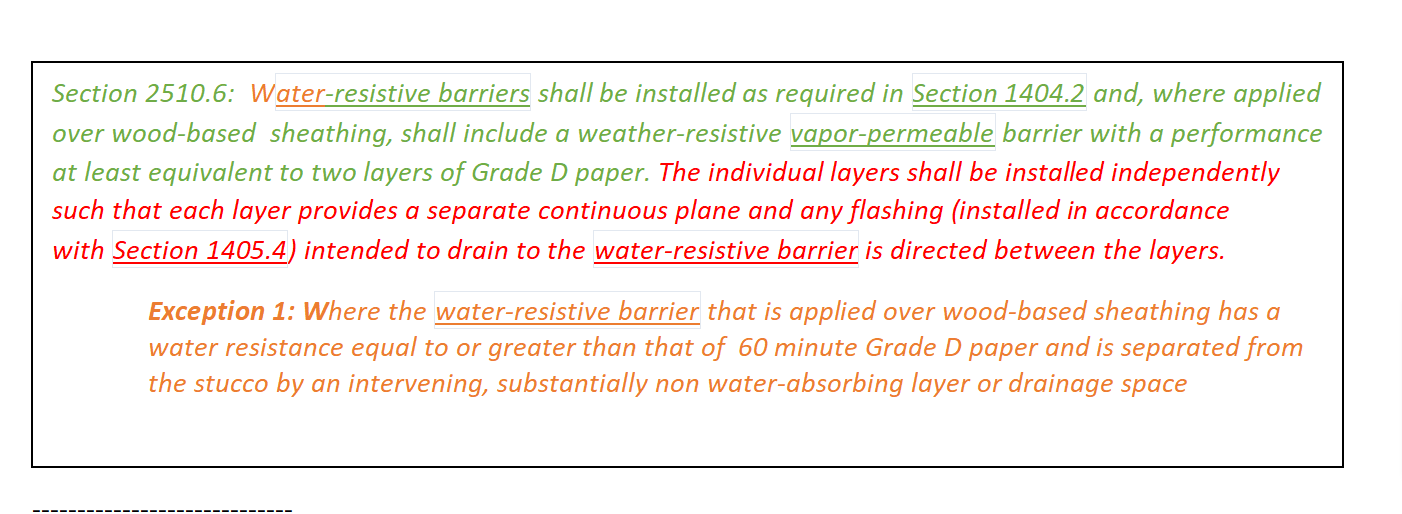
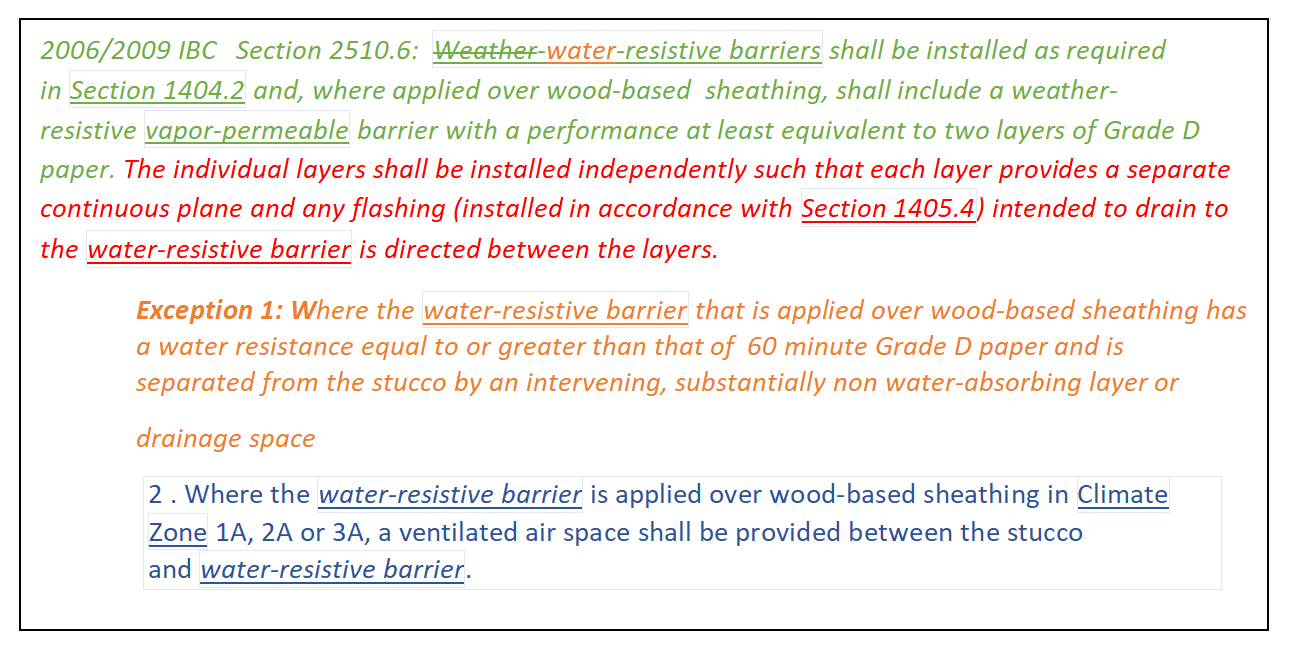
This new “ventilated air space” for Southern Moist/Marine climates (See Figure 1) had one main problem: “ventilated air space” was not defined in the code and was left to interpretation.
Not to worry, IBC 2021, is going to clear that up.
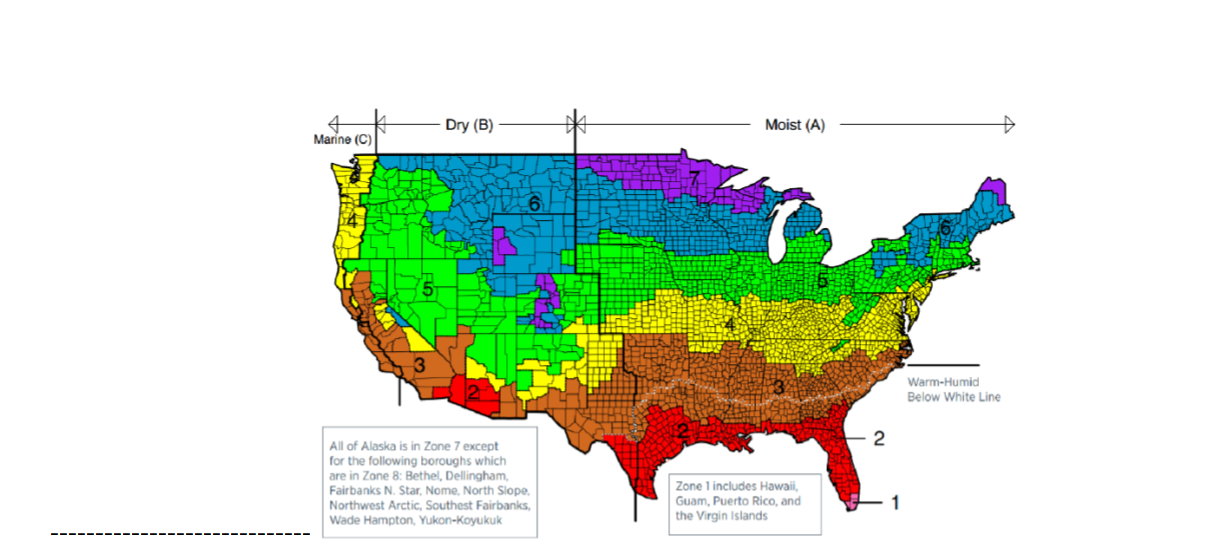
Dry Climates remained fairly the same as 2015 but reverted back to including 10- and 60-minute papers and clarifies the placement of foam plastic sheathing.
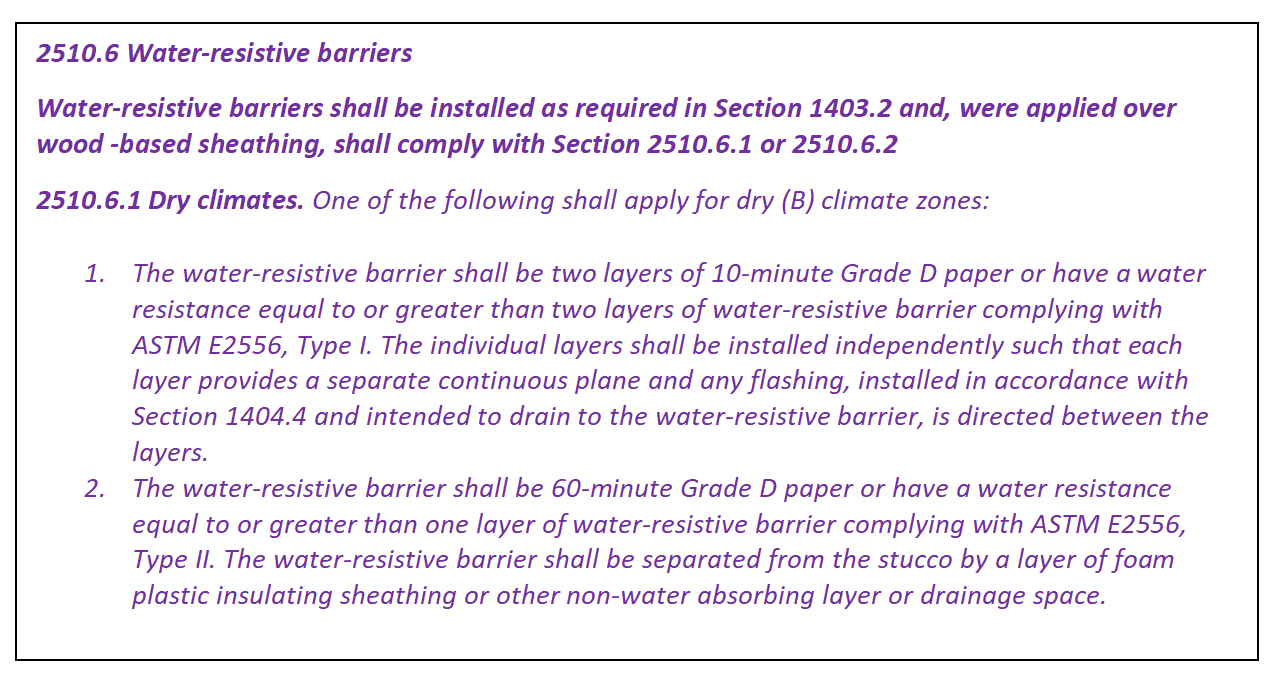
You can use a material that allows for drainage that is 3/16” thick or you can use anything that passes Drainage Test ASTM E2273 (EIFS Drainage Tests) or ASTM E2925 A2, (which is a modified version of the E2273.
